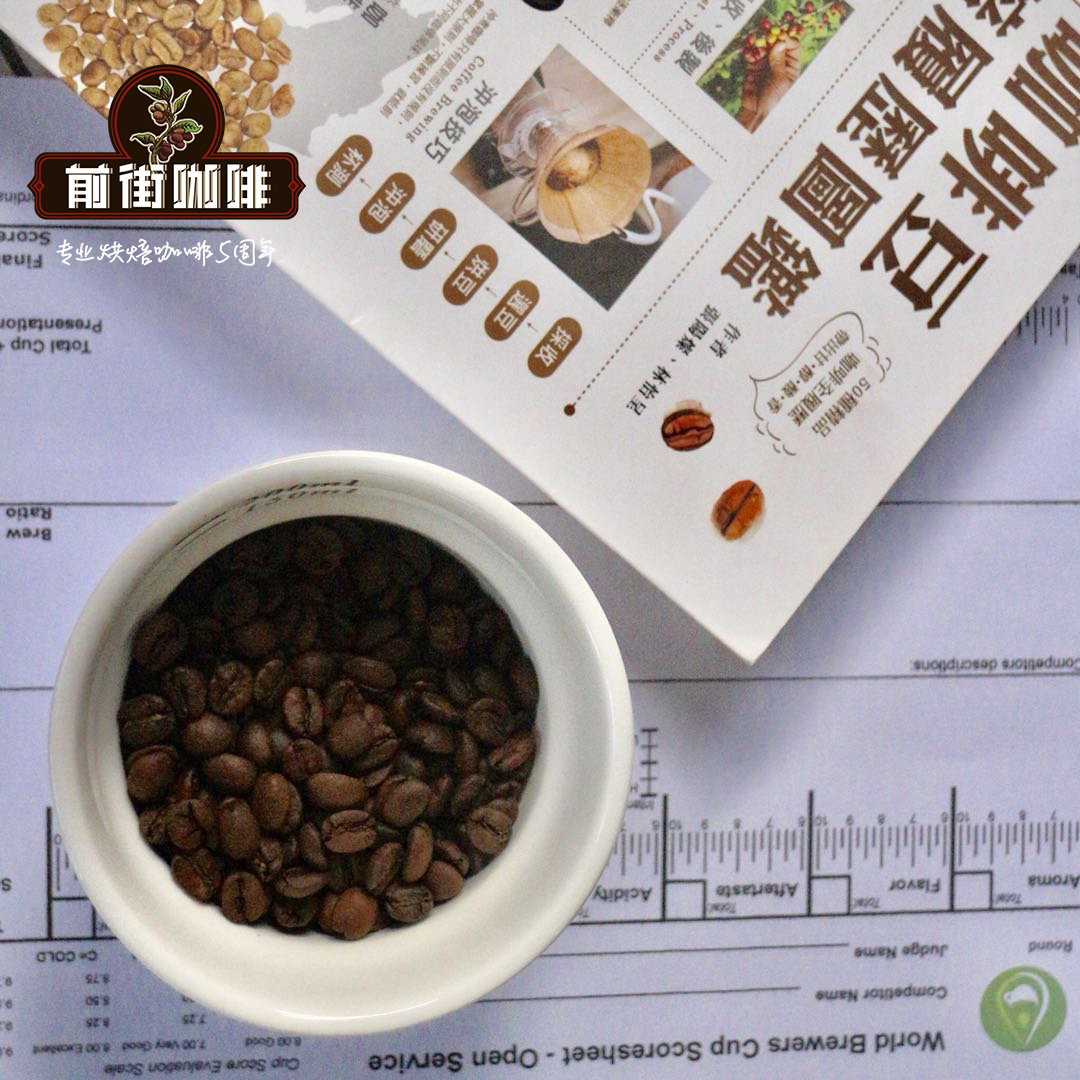Costa Rican Coffee History _ introduction to the Flavor of Costa Rican Organic Coffee cultivation

Professional coffee knowledge exchange more coffee bean information please follow the coffee workshop (Wechat official account cafe_style)
History of Educardo Matos
Costa Rica is a country next to Panama, located in the central United States, as a bridge between the north and the south, its location makes it a trading hub for aborigines.
When outsiders arrived from the Old World, they found that the new immigrants had introduced a variety of edible plants because of their diet and clothing habits. At that time, coffee had become very popular in Europe, and it was timely to spread it. Costa Rica has various advantages in terms of environmental conditions, such as the soil left by volcanic activities, the stable and reliable rainy season and temperature, as well as the overall height of the agricultural soil up to 800-1600 meters, which makes it an impeccable growing environment for coffee crops, so it makes sense for Costa Rica to introduce coffee.
Costa Rica introduced coffee from people in the Caribbean in about 1720. Before that, Costa Rican agriculture was mostly self-sufficient.
Gradually, the Colombian government began to adopt a cumulative attitude to promote the cultivation of coffee, including providing land to farmers and taxing people who were interested in growing coffee. Coffee had a better name at that time-"grano de oro" meant golden grain. Although Spain had long gained independence, it was not until 1838 that Costa Rica became a sovereign state thanks to its then head of state, Rulio Carrillo. At that time, the Fuhrer proposed a solid agricultural plan, with coffee as the focus of the country's economic profits, and began to build a road to the Atlantic to help quickly transport goods to Europe and the north. The road took 50 years to complete. At the same time, some rich and powerful people began to appear in society, one of whom is Don Santiago Fern á ndez Hidalgo with a "labyrinth". He was the first person to successfully come up with a way to export large quantities of coffee beans to other places, and he was also one of the key figures involved in improving the production and processing of coffee cherries and beans. One of the innovations was the fermentation of cherries, which later introduced new varieties of coffee, such as Bourbon bourbon.
Gradually, the Colombian government began to adopt a cumulative attitude to promote the cultivation of coffee, including providing land to farmers and taxing people who were interested in growing coffee. Coffee had a better name at that time-"grano de oro" meant golden grain. Although Spain had long gained independence, it was not until 1838 that Costa Rica became a sovereign state thanks to its then head of state, Rulio Carrillo. At that time, the Fuhrer proposed a solid agricultural plan, with coffee as the focus of the country's economic profits, and began to build a road to the Atlantic to help quickly transport goods to Europe and the north. The road took 50 years to complete. At the same time, some rich and powerful people began to appear in society, one of whom is Don Santiago Fern á ndez Hidalgo with a "labyrinth". He was the first person to successfully come up with a way to export large quantities of coffee beans to other places, and he was also one of the key figures involved in improving the production and processing of coffee cherries and beans. One of the innovations was the fermentation of cherries, which later introduced new varieties of coffee, such as Bourbon bourbon.
Coffee cultivation started slowly, but growth has always been stable. This is more or less because there were no large-scale social conflicts that affected the operation of the country before the independence movement, even if the independence movement had a certain impact, compared with similar incidents in other regions such as Colombia and Venezuela, such conflicts are less serious and cruel. After gaining independence in 1821, the country's economy began to rely on the small plantations around it, many of which were driven by religious groups whose original knowledge about growing Typica or Criollo varieties (all Arabica) was even the seed.
For some time, the economy has continued to grow, and it seems that the country can almost enjoy eternal prosperity and stability. Unfortunately, the good times did not last long. During the period 1870-1890, social discontent about wages and labour benefits reached a tipping point. Coupled with the decline in international prices and the debt owed by the construction of the Atlantic railway, society began to realize that the economy was about to collapse. People began to turn their attention to improving social equality, education, industry and sources of income.
With the advent of the 20th century, mules were gradually replaced by chariots and trains, the road to the Atlantic Ocean was finally completed, and modern processing machinery began to appear on the market. dryers and pulpers that used to be unaffordable to farmers have also emerged as a result of the emergence of new organizations to provide processing services for farmers. Of course, the companies that provide these services charge fees, and they also have regulations for receiving beans to ensure the quality of their products for export. The mechanization and standardization of the coffee industry has been consolidated, and high-quality varieties such as Caturra and Catuai have also appeared in more regions. At the same time, coffee is no longer the only crop developed in Costa Rica, and the national economy has begun to diversify, investing in mineral extraction, growing bananas, cocoa and sugar cane.
When it comes to the history of Costa Rican coffee, the influence of American businessman Minor C. Keith must be mentioned. He proposed to help repair the debt left by the government and Britain over the past decade due to the construction of railways. This proposal brought him numerous benefits, winning not only the right to use the train in 1999, but also a vast area of land (800000 acres). He used intensive methods to grow bananas, squeezed out the land and exhausted the nutrients of the soil, repeatedly moved to new land to do the same thing, used trains to export bananas and other fruits to the United States, and paid low taxes. He also invested in the United Fruit Company. The company's diversified investment has made it almost non-invasive, and even if the banana disease caused by Fusarium, the mystery of Panama, occurs, they use the affected land to grow cocoa, which can be said to control production in most countries. This was feasible by current environmental standards, but during World War I, pricing bananas on a par with coffee particularly affected their main export market, Europe.
In close proximity to Colombia, institutions have emerged dedicated to disseminating modern methods and techniques for coffee cultivation and variety research, among which the el instituto de caf è de Costa Rica "(Icafe)-Costa Rican Caf é was established in 1933.
In fact, the country has eight areas marked as coffee growers: la Bruca, Tresrios, Orosi, Turialva, the Central Valley, the Western Valley, and Tarraz ú Guanacaster. Through cooperation and agreements reached in these regions, the quality of coffee is ensured by consistent hand selection and selection of ripe cherries.
Costa Rican coffee is organic, and proof can always be found on the package, recording respect for biodiversity, farmers and customers. At present, besides bananas and pineapples, coffee is the third largest agricultural product exported.
Coffee and tourism
Historically, as a country dependent on agriculture, its people will inevitably appreciate this area and pay special attention to the protection of resources. For this reason, coffee area guided tours provided by travel agencies are very common. One of the most popular places is the "Haciendas" (farm), where guests can enjoy the spa and delicious food, as well as the expertise of baristas and camp near the coffee plantation to enjoy all the services while enjoying the fresh air.
END
Important Notice :
前街咖啡 FrontStreet Coffee has moved to new addredd:
FrontStreet Coffee Address: 315,Donghua East Road,GuangZhou
Tel:020 38364473
- Prev

Introduction to the History of Colombian Coffee: planting conditions and harvesting processing of Colombian Coffee beans
Professional coffee knowledge exchange more coffee bean information Please follow the coffee workshop (Wechat official account cafe_style) from Ethiopia to the Arab world, through this trade route, coffee has traveled all over the world, across Europe and into the new world, and may even become an important economy of the so-called developing countries. Looking back at the history of coffee in Colombia, coffee is probably made by Venezuela.
- Next

Comparison of Flavor characteristics of Rosa Coffee among Golden Standard, Red Standard and CHAKA Chaka in Ruoxia Village
Professional coffee knowledge exchange more coffee bean information Please follow the coffee workshop (Wechat official account cafe_style) recently we have entered a batch of beans from Ruoxia Village, which are gold standard, red mark and CHAKA batches. The editor is a little curious, what is the difference between several beans also from Rosa Village? So today, the editor will compare the differences between these beans.
Related
- Detailed explanation of Jadeite planting Land in Panamanian Jadeite Manor introduction to the grading system of Jadeite competitive bidding, Red bid, Green bid and Rose Summer
- Story of Coffee planting in Brenka region of Costa Rica Stonehenge Manor anaerobic heavy honey treatment of flavor mouth
- What's on the barrel of Blue Mountain Coffee beans?
- Can American coffee also pull flowers? How to use hot American style to pull out a good-looking pattern?
- Can you make a cold extract with coffee beans? What is the right proportion for cold-extracted coffee formula?
- Indonesian PWN Gold Mandrine Coffee Origin Features Flavor How to Chong? Mandolin coffee is American.
- A brief introduction to the flavor characteristics of Brazilian yellow bourbon coffee beans
- What is the effect of different water quality on the flavor of cold-extracted coffee? What kind of water is best for brewing coffee?
- Why do you think of Rose Summer whenever you mention Panamanian coffee?
- Introduction to the characteristics of authentic blue mountain coffee bean producing areas? What is the CIB Coffee Authority in Jamaica?

